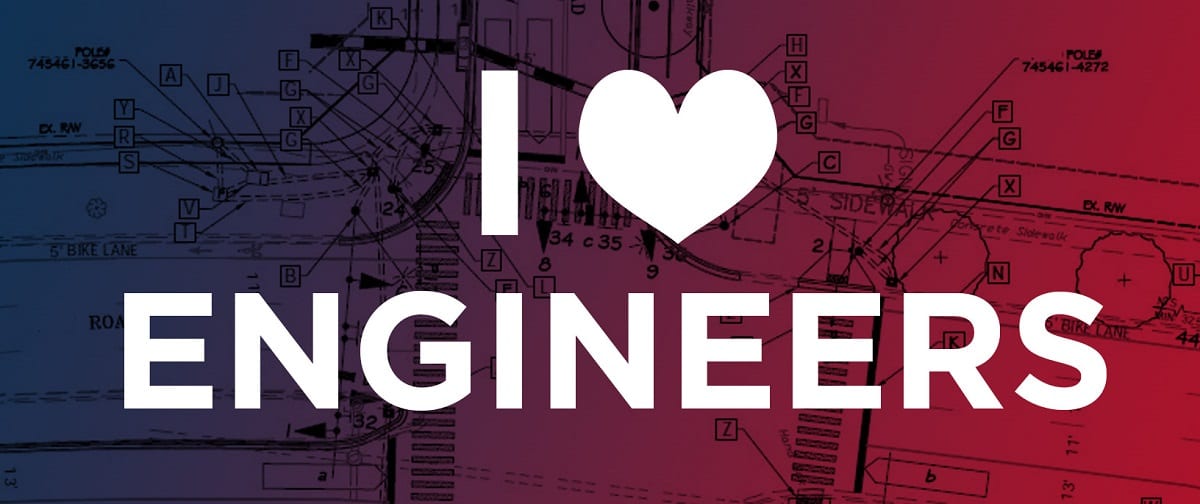The days of the slow, meandering Sunday Drive are long gone. Instead, people want to get “there” faster and easier than ever before. Traffic engineers in the DC region are acutely aware of this!
Getting you “there” is the focus for us traffic engineers:
“Traffic engineering uses engineering techniques to enable the safe and efficient movement of people and goods.”
Since it’s Engineer’s Week (which always coincides with Washington’s Birthday), we thought we’d take a few moments to illustrate how traffic engineers and transportation planners try to make your lives better. One way to spot a traffic engineer is to find the “PE” or “EIT” after their name.
You may have noticed the designations “PE” or “EIT” after some of our transportation team members’ names. What do these acronyms mean? Or more importantly – what do they signify?
Professional Engineer and Transportation Planner Designations
In short, “PE” is “Professional Engineer” and “EIT” is “Engineer in Training.” There are academic and work experience hoops one must jump through to earn these designations. Our PEs and EITs feel good about the titles.
Additionally, our transportation planners (as opposed to traffic engineers) often bear the designations PTP or AICP. The Professional Transportation Planner (PTP) certification recognizes professionals who have a wide range of education and experience in transportation planning. Transportation planners with an AICP certification have the academic credentials, work experience, and skills required to serve communities effectively and indicate a commitment to the highest standard of ethical practice.
But exactly why should people (and notably, our clients) care about PE, PTP, AICP, or EIT?
These designations are an indication that:
- Drivers won’t get stuck at an intersection signal longer than is necessary for the common good
- Pedestrians have the safest options to cross streets
- The owner of a new office or residential complex gets the most optimal transportation network for their residents
- Investors and developers are sure that their proposed infrastructure investment will comply with national, state, or local traffic engineering standards
- Cyclists increasingly find safer and more convenient pathways to get around (in Northern Virginia, see how bicycle infrastructure is expanding bikeshare in Tysons and bike lanes in Leesburg)
While our engineers and planners might nerd it out more than the rest, we’re all interested in the same thing when it comes to transportation. So give a hug to an engineer during #EngineersWeek!!

